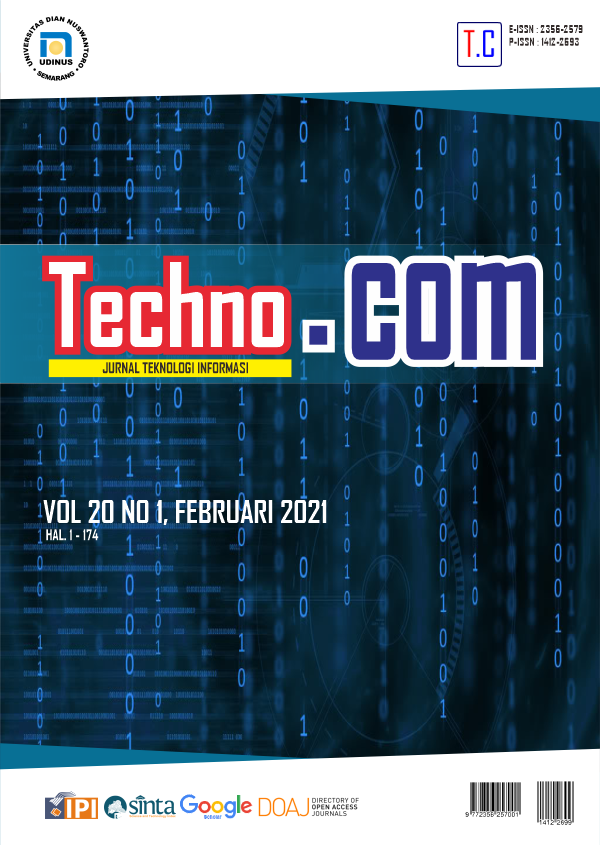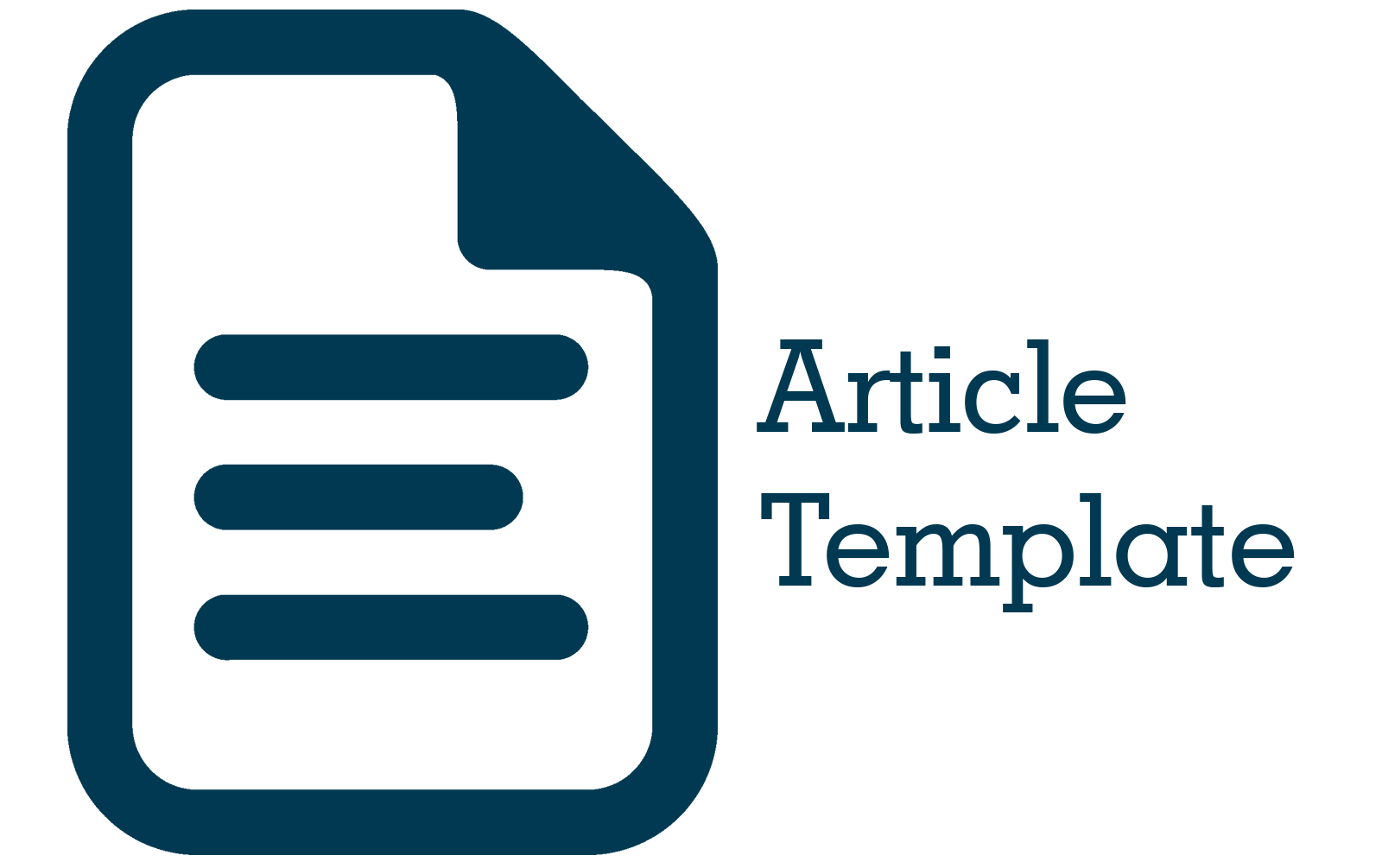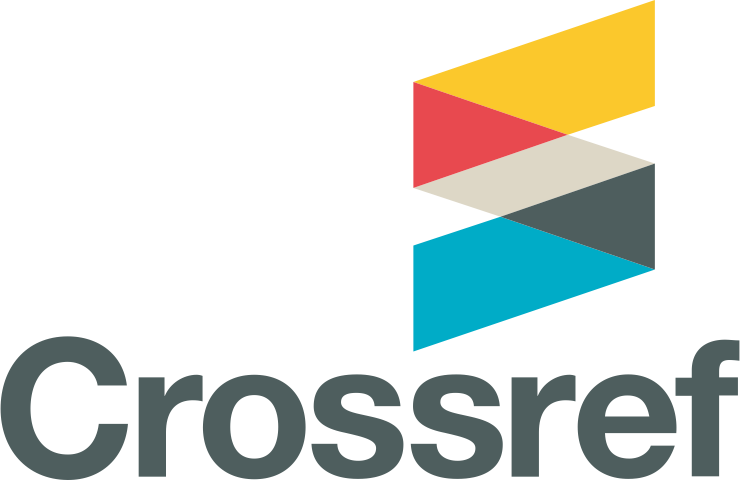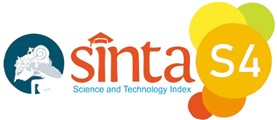Klasifikasi Citra Game Batu Kertas Gunting Menggunakan Convolutional Neural Network
DOI:
https://doi.org/10.33633/tc.v20i1.4273Keywords:
Permainan batu, gunting, dan kertas, Convolutional neural network (CNN). Klasifikasi CitraAbstract
Permainan batu, gunting, dan kertas sangat populer di seluruh dunia. Permainan ini biasanya dimainkan saat sedang berkumpul untuk mengundi ataupun hanya bermain untuk mengetahui yang menang dan yang kalah. Namun, perkembangan zaman dan teknologi mengakibatkan orang dapat berkumpul secara virtual. Untuk bisa melakukan permainan ini secara virtual, penelitian ini membuat model klasifikasi citra untuk membedakan objek tangan yang menunjuk batu, kertas, dan gunting. Performa metode klasifikasi merupakan hal yang harus diperhatikan dalam kasus ini. Salah satu metode klasifikasi citra yang populer adalah Convolutional Neural Network (CNN). CNN adalah salah satu jenis neural network yang biasa digunakan pada data klasifikasi citra. CNN terinspirasi dari jaringan syaraf manusia. Algoritma ini memiliki 3 tahapan yang dipakai, yaitu convolutional layer, pooling layer, dan fully connected layer. Uji coba 5-Fold cross validation klasifikasi objek tangan yang menunjuk citra batu, kertas, dan gunting menggunakan CNN pada penelitian ini menghasilkan rata-rata akurasi sebesar 97.66%.References
L. Zhu and P. Spachos, “Towards Image Classification with Machine Learning Methodologies for Smartphones,” Mach. Learn. Knowl. Extr., vol. 1, no. 4, pp. 1039–1057, 2019, doi: 10.3390/make1040059.
N. O’Mahony et al., “Deep Learning vs. Traditional Computer Vision,” Adv. Intell. Syst. Comput., vol. 943, no. Cv, pp. 128–144, 2020, doi: 10.1007/978-3-030-17795-9_10.
K. O’Shea and R. Nash, “An Introduction to Convolutional Neural Networks,” pp. 1–11, 2015, [Online]. Available: http://arxiv.org/abs/1511.08458.
A. A. M. Al-Saffar, H. Tao, and M. A. Talab, “Review of deep convolution neural network in image classification,” Proceeding - 2017 Int. Conf. Radar, Antenna, Microwave, Electron. Telecommun. ICRAMET 2017, vol. 2018-Janua, pp. 26–31, 2017, doi: 10.1109/ICRAMET.2017.8253139.
M. Pak and S. Kim, “A review of deep learning in image recognition,” Proc. 2017 4th Int. Conf. Comput. Appl. Inf. Process. Technol. CAIPT 2017, vol. 2018-Janua, pp. 1–3, 2018, doi: 10.1109/CAIPT.2017.8320684.
“Rock-Paper-Scissors Images | Kaggle.” https://www.kaggle.com/drgfreeman/rockpaperscissors (accessed Dec. 08, 2020).
S. Albawi, T. A. Mohammed, and S. Al-Zawi, “Understanding of a convolutional neural network,” Proc. 2017 Int. Conf. Eng. Technol. ICET 2017, vol. 2018-Janua, pp. 1–6, 2018, doi: 10.1109/ICEngTechnol.2017.8308186.
A. F. M. Agarap, “Deep Learning using Rectified Linear Units (ReLU),” arXiv, no. 1, pp. 2–8, 2018.
“Keras: the Python deep learning API.” https://keras.io/ (accessed Dec. 08, 2020).
D. P. Kingma and J. L. Ba, “Adam: A method for stochastic optimization,” 3rd Int. Conf. Learn. Represent. ICLR 2015 - Conf. Track Proc., pp. 1–15, 2015.
S. Mannor, B. Peleg, and R. Rubinstein, “The cross entropy method for classification,” ICML 2005 - Proc. 22nd Int. Conf. Mach. Learn., pp. 561–568, 2005, doi: 10.1145/1102351.1102422.
C. Goutte and E. Gaussier, “A Probabilistic Interpretation of Precision, Recall and F-Score, with Implication for Evaluation,” Lect. Notes Comput. Sci., vol. 3408, no. April, pp. 345–359, 2005, doi: 10.1007/978-3-540-31865-1_25.
Y. Lecun, L. Bottou, Y. Bengio, and P. Ha, “LeNet,” Proc. IEEE, no. November, pp. 1–46, 1998.
T. F. Gonzalez, “Handbook of approximation algorithms and metaheuristics,” Handb. Approx. Algorithms Metaheuristics, pp. 1–1432, 2007, doi: 10.1201/9781420010749.
M. D. Zeiler and R. Fergus, “Visualizing and understanding convolutional networks,” Lect. Notes Comput. Sci. (including Subser. Lect. Notes Artif. Intell. Lect. Notes Bioinformatics), vol. 8689 LNCS, no. PART 1, pp. 818–833, 2014, doi: 10.1007/978-3-319-10590-1_53.
C. Szegedy et al., “Going deeper with convolutions,” Proc. IEEE Comput. Soc. Conf. Comput. Vis. Pattern Recognit., vol. 07-12-June, pp. 1–9, 2015, doi: 10.1109/CVPR.2015.7298594.
K. Simonyan and A. Zisserman, “Very deep convolutional networks for large-scale image recognition,” 3rd Int. Conf. Learn. Represent. ICLR 2015 - Conf. Track Proc., pp. 1–14, 2015.
K. He, X. Zhang, S. Ren, and J. Sun, “Deep residual learning for image recognition,” Proc. IEEE Comput. Soc. Conf. Comput. Vis. Pattern Recognit., vol. 2016-Decem, pp. 770–778, 2016, doi: 10.1109/CVPR.2016.90.
C. Tan, F. Sun, T. Kong, W. Zhang, C. Yang, and C. Liu, “A survey on deep transfer learning,” Lect. Notes Comput. Sci. (including Subser. Lect. Notes Artif. Intell. Lect. Notes Bioinformatics), vol. 11141 LNCS, pp. 270–279, 2018, doi: 10.1007/978-3-030-01424-7_27.
Downloads
Published
Issue
Section
License
Copyright (c) 2021 Mohammad Farid Naufal, Solichul Huda

This work is licensed under a Creative Commons Attribution-NonCommercial 4.0 International License.
License Terms
All articles published in Techno.COM Journal are licensed under the Creative Commons Attribution-NonCommercial 4.0 International (CC BY-NC 4.0). This means:
1. Attribution
Readers and users are free to:
-
Share – Copy and redistribute the material in any medium or format.
-
Adapt – Remix, transform, and build upon the material.
As long as proper credit is given to the original work by citing the author(s) and the journal.
2. Non-Commercial Use
-
The material cannot be used for commercial purposes.
-
Commercial use includes selling the content, using it in commercial advertising, or integrating it into products/services for profit.
3. Rights of Authors
-
Authors retain copyright and grant Techno.COM Journal the right to publish the article.
-
Authors can distribute their work (e.g., in institutional repositories or personal websites) with proper acknowledgment of the journal.
4. No Additional Restrictions
-
The journal cannot apply legal terms or technological measures that restrict others from using the material in ways allowed by the license.
5. Disclaimer
-
The journal is not responsible for how the published content is used by third parties.
-
The opinions expressed in the articles are solely those of the authors.
For more details, visit the Creative Commons License Page:
? https://creativecommons.org/licenses/by-nc/4.0/












